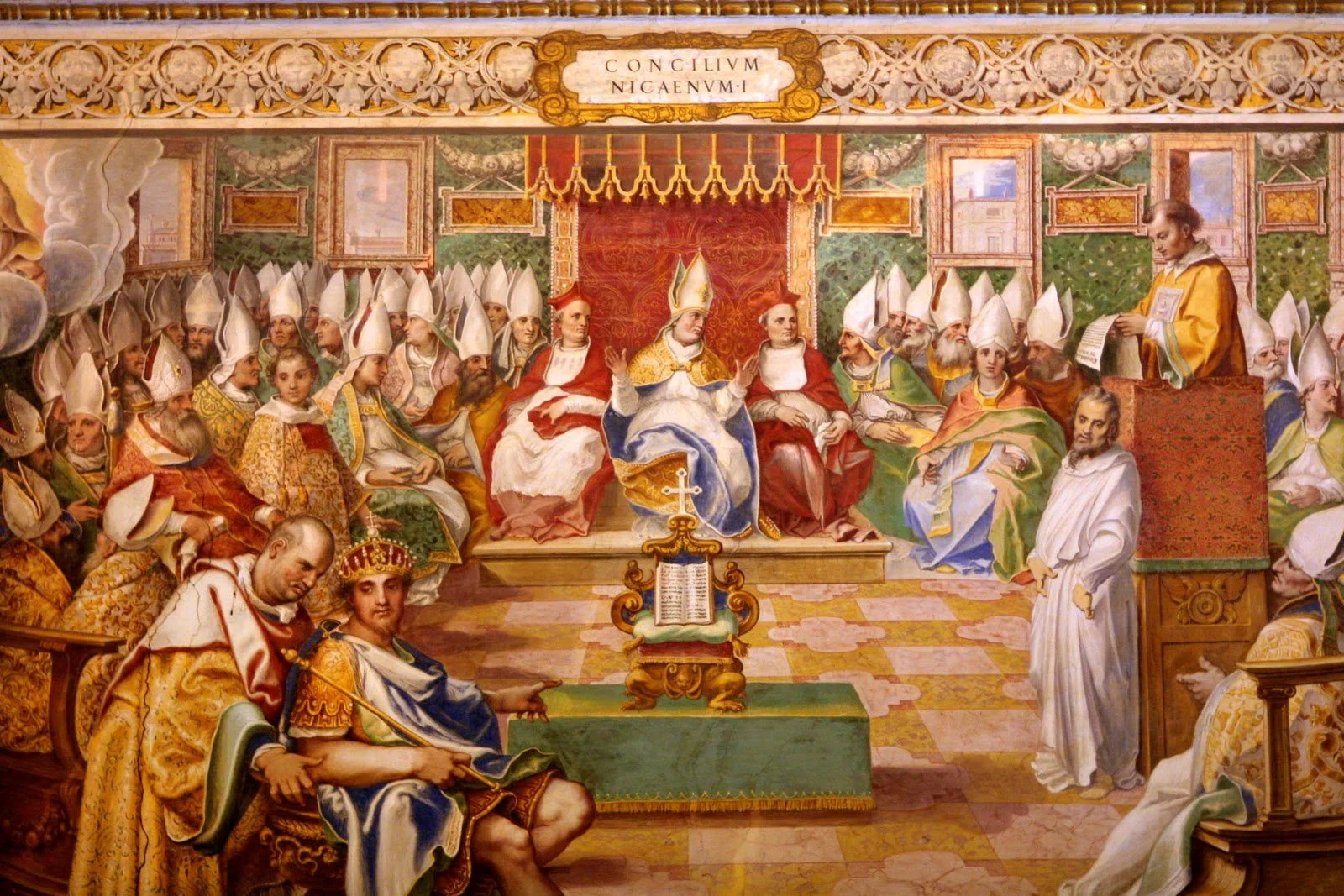Council of Nicaea 325. Fresco in Salone Sistino, Vatican.
In 325 AD, a gathering took place in the ancient city of Nicaea that would shape the trajectory of Christianity—and by extension, Western civilization—for centuries. The First Council of Nicaea, convened by Emperor Constantine, was far more than a theological summit. It was the moment when imperial power met religious doctrine, laying the foundation for what would become the Christian Roman Empire and, eventually, Christendom.
This blog post explores the Council of Nicaea in the broader context of the late Roman Empire—why it was convened, what it achieved, and how its impact continues to echo through history.
The Roman Empire in Transition
By the early 4th century, the Roman Empire was undergoing a profound transformation. The old pagan order, though still dominant in many areas, was gradually being displaced by a new force: Christianity. This once-marginal sect had grown substantially since the first century, fueled by missionary efforts and its appeal to both the oppressed and the elite.
Contrary to popular belief, Christian persecution in the Roman Empire had been sporadic rather than constant. Many Christians lived peacefully, some even holding high office. But tensions remained. When Emperor Constantine rose to power after years of civil war, he did something revolutionary: he embraced the Christian faith.
The Edict of Milan in 313 AD legalized Christian worship and returned confiscated Church property. For Constantine, Christianity was not just a matter of personal conviction—it was a political unifier. But to serve that function, the religion itself needed unity.
The Crisis That Sparked a Council
At the heart of the crisis was a theological dispute over the nature of Jesus Christ. A priest named Arius of Alexandria taught that Jesus was not co-eternal with God the Father, but a created being—divine, perhaps, but not equal to God.
Arianism, as it came to be known, quickly gained traction and sparked intense debate. For Constantine, religious disunity threatened political stability. He took the extraordinary step of calling an ecumenical council to resolve the matter.
The Council of Nicaea was unprecedented. Over 300 bishops were summoned from across the empire—some bearing the scars of earlier persecution. They came together not merely to debate theology, but to safeguard the unity of a now-imperial faith.
Defining Orthodoxy
The key issue was Christology: Was Jesus the same as God the Father, or was he distinct and subordinate?
Arius maintained that Jesus was created and therefore not divine in the same way as God. His opponents, led by Bishop Alexander of Alexandria and his deacon Athanasius, argued that Jesus was “begotten, not made,” and of the same divine essence—homoousios—as the Father.
After months of heated debate, the council rejected Arianism and endorsed the doctrine of Christ’s full divinity. This consensus was codified in the Nicene Creed, which affirmed belief in one God, in Jesus Christ as “God from God, Light from Light, true God from true God,” and in the Holy Spirit.
The creed marked a foundational moment in Christian theology. Though the debate would continue for centuries, the council had drawn a theological line in the sand.
Key Participants at the First Council of Nicaea (325 AD).
The Emperor’s Role
Constantine did not merely sponsor the council—he presided over it. Though not a bishop himself, his involvement reflected a new reality: the emperor as a central figure in Church affairs.
This was a turning point. Never before had a Roman emperor so directly influenced Christian doctrine. While some bishops welcomed the protection and resources imperial patronage provided, others were uneasy with the Church’s growing dependence on secular power.
Historians still debate whether Constantine’s motivations were spiritual, political, or a mix of both. But his actions undeniably changed the nature of Christianity. It was now not just a faith, but a state religion in the making.
Enduring Misconceptions
Popular myths, particularly those popularized by modern fiction, have clouded the facts about Nicaea. Contrary to some claims, the council did not decide which books would be included in the Bible, nor did it invent the idea of Jesus’ divinity.
The biblical canon developed over several centuries through widespread usage and theological consensus. Nicaea focused specifically on defining the nature of Christ’s relationship to God the Father—not on determining the contents of Scripture.
Legacy and Impact
The First Council of Nicaea was the first in a series of ecumenical councils that would shape Christian doctrine for centuries. It established precedent: when theology divided the Church, councils would be called to define orthodoxy.
It also laid the groundwork for the Christianization of the Roman Empire. Over time, emperors would not only support but legislate Christian doctrine. Church and state became intertwined in ways that would dominate European history for over a millennium.
Even today, the Nicene Creed is recited in churches around the world. The language may vary, but its core message remains: Jesus Christ is divine, eternal, and one with the Father.
Conclusion
The Council of Nicaea was not merely a theological event. It was a reflection of a rapidly changing empire, a sign of the Church’s evolving identity, and a foretaste of the complex relationship between faith and power in the centuries to come.
What happened in Nicaea continues to matter—not only for Christians, but for anyone interested in how belief systems shape societies. It was a moment when ideas met empire, and the result was the birth of a new world order.
Further Reading
The History of the Church by Eusebius
The Early Church by Henry Chadwick
A Short History of the Early Church by Harry Boer



